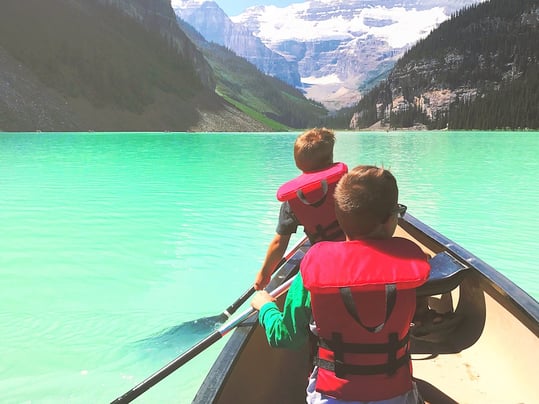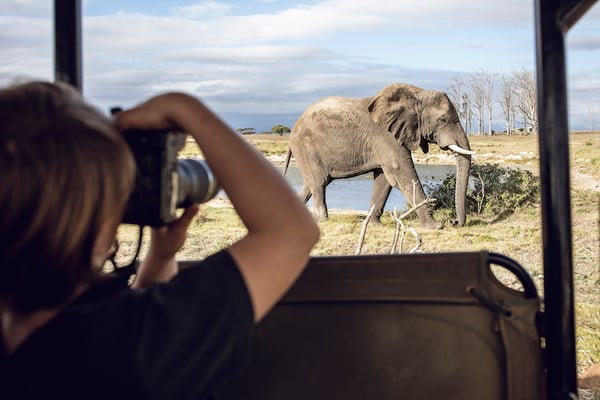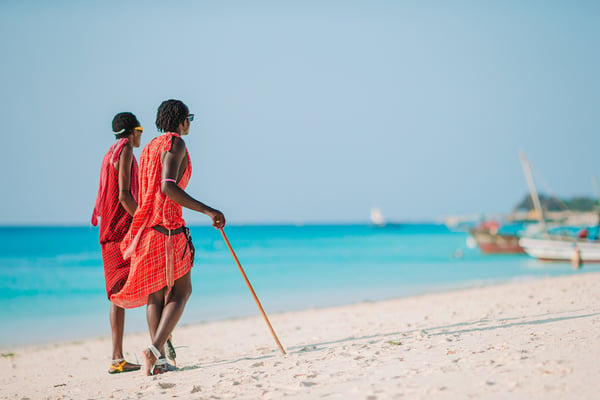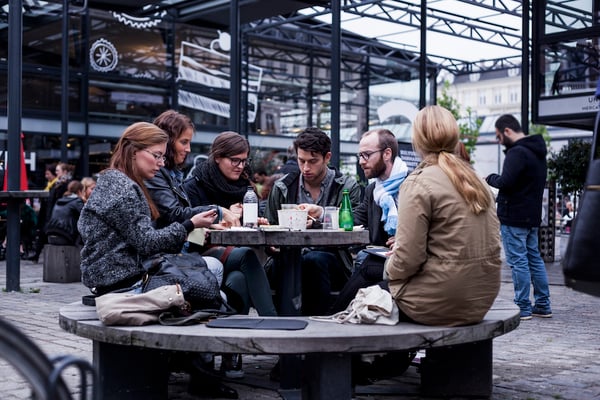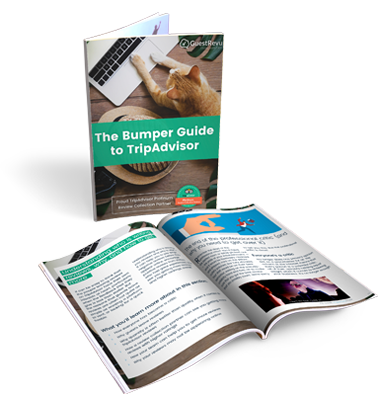The “one size fits all” approach to travel marketing may well be dead and gone. Special interest tourist markets are becoming more and more mainstream, and catering to a specific tourism niche or two can be a great way to get the right kind of heads in your beds. We’ve put together this list of ten types of tourism; and hope you share it to see who says they know about all these interesting types of tourism - because for us, putting this list together is how we came to know of a few of them!
1. Adventure tourism
Everyone likes a little escape from time to time; and for young, active travellers especially, a travel itinerary with action, activities and adventure in a new place is the best way to recharge. If your hotel is located near whitewater rafting operators, bungee jumping facilities, mountain biking trails and the like, you could be in a good spot for adventure tourists – if you meet their needs and communicate your offering effectively.
To earn more bookings from these adrenaline-hungry adventurers, you need to make an intentional effort to communicate the activities available, as well as showing those interested that booking at your hotel will make everything easier (since you may already have all the contacts and higher priority access to the itineraries listed). You don’t necessarily need to have all the activities on-site, but a few complimentary amenities (like secure storage for guests’ own equipment, or pre-packed breakfasts for ultra-early risers) and the messaging behind your hotel experience, amenities and add-ons are what will make you a desirable option. Things like couples packages, seasonal family excursions are appealing for such trips, and your feedback data will let you in on who you should target most with which offers.
2. Wildlife tourism
Although hotels with game reserves, safaris, and sunset cruises on their doorsteps are clearly in this tourism market, and this is another one that largely depends on location for its success, hotel marketers still need to package and promote their offerings appropriately.
Hotel owners in this market need to do as much as they can to bring imagery of the flora and fauna at their property to the forefront, as well as create packages that will be relevant to their prospective guests. That means diving into guest data to ascertain key data points like the age groups that will likely come in, who they go on these travels with, and where they come from, so that the messaging can be as accurately targeted as possible. You need to join the communities that wildlife tourists engage in on social media, and strengthen your online presence by creating content that displays everything there is to see and do, while showing them how it's even better to go in person.
3. Medical tourism
Medical tourism is a category that is steadily growing in popularity, and according to statista, it was valued at 54.4 billion U.S. dollars in 2020, and is forecast to reach a market size of over 200 billion U.S. dollars by 2027. Though it stems from the need to access the best healthcare and cosmetics opportunities, it presents a budding opportunity for hoteliers in medical tourism hotspots.
Looking closely at the serious cases that neighbouring medical professionals deal with, and learning where most of the patients come from, is the kind of data you need to make it in this market. That is how you can create packages with attractive last-minute booking rates, for example, flexible cancellation policies, and advertise how comfortable your property is for a recovering patient. You may need deeper pockets to ensure you have the best options for dietary requirements, ergonomic rooms and living spaces that will help guests heal comfortably once they’re discharged, and perhaps private transport from the hospital they will have come from.
4. Dark tourism
Before your imagination takes off, dark tourism is not some kind of cultic cruise with human sacrifices. Dark tourists (otherwise known as macabre, grief or morbid tourists) do travel to places historically associated with death and tragedy, but to try and immerse themselves in the communities of those who suffered, in the hopes that standing where they stood will help them have a deeper understanding of their plight.
Examples of popular dark tourism destinations would be historic sites like the site of the Chernobyl disaster, the Củ Chi tunnels in Vietnam, Auschwitz, and Robben Island. If you’re looking for inspiration on how engaging and versatile dark tours can be, there’s a Netflix series called Dark Tourist hosted by David Farrier, where he investigates dark travel hot spots around the world while interrogating some of the taboos that take place in them.
Dark tourism works for hotels that are located in places with a degree of tragic history, and relevant hoteliers can align their offering as part of these attractions by thinking more like tour operators. This would mean putting the historic sites at the forefront of your messaging on your website and social media channels, sharing how close to the attractions you are, what else visitors can do in the area to experience the dark tour fully, and to entice them with any discounts if you can arrange for more affordable itineraries (compared to tourist group packages).
Hotel owners can alternatively collaborate with established tour operators, depending on whether their guests would prefer to move in tourist groups or with designated guides. The main thing is that your prospective guests should know that you are the suitable conduit to a seamless and fulfilling dark tourism experience, while ensuring that your messaging doesn’t come across as offensive, insensitive or needlessly voyeuristic – although Passport Photo Online reports only 9% of American travellers are against dark tourism, its best to tread sensitively.
5. Wellness tourism
The travels of wellness tourists are motivated quite similarly to those of medical tourists, but their needs often differ quite vastly. A wellness tourist may go on a detox retreat to recharge, a weight loss cruise with friends and family, a hotel near hot springs, or go anywhere that will aid their physical, spiritual and mental wellbeing.
To attract wellness travellers to your hotel, you need plans and programmes prepared for different health issues, backed by professionals who can be brought on-site or transported nearby for activities like yoga, meditation, and rejuvenation therapy. Having all the needed activities and professionals on-site is a bonus to leverage within your marketing, because for these types of travels it’s really important for the guest to block out the outside world and focus on their personal journey.
6. Culinary tourism
Culinary tourism works well for both domestic and international travellers, as long as the main component of the trip (food) satisfies their palates. Places like Mexico, London, France, Italy etc. have food festivals frequently, so they tend to attract “foodies” or culinary tourists.
Tourists that make hotel bookings for culinary travels will likely want to be at a hotel that's near all the foodie action, so hoteliers need to have a roadmap of food hotspots and find a way to incorporate that with their internal menus. If you know you have a killer breakfast buffet for example, make that a premium experience. Brunch in bed is a great touch for guests who may have over-indulged the previous night and want to sleep in. Make a meal of your brunch options, and serve them with a culinary experience to remember before they step out to the food festivals and stalls the town has to offer.
7. Eco tourism
People who appreciate nature and want to actively help counter the effects of traditional tourism on the environment tend to gravitate towards ecotourism, because it is seen as more sustainable and fulfilling than most forms of traditional tourism. The focus of these travellers is on conserving the environment by being socially responsible and keeping their carbon footprint as low as possible (i.e with transportation, actively being against the underworld of poaching, and avoiding all things related to the consumptive nature of mass tourism). That benefits the local people and their businesses, while being less harsh on endangered environments and communities.
Hoteliers who are interested in this niche of tourism need to keep their online presence educational, about the socio-environmental issues of the local area, and how guests can help by immersing themselves in them. This means being alert to relevant information before sharing and updating it regularly on all channels (with visuals), as well as being transparent about where proceeds go to. This type of tourism has a high emotional value, and being open about the cause at hand is one of the main ways to attract socio-economic activists and enthusiasts.
8. Slow tourism
As sustainability is gaining popularity, it’s become more common to take a trip on a stripped down to-do list, followed by ‘seeing when you get there’ and blending in with the community. That is what slow tourism is all about, and more travellers are awakening their inner backpacker in this type of travel.
Guests are more willing to recommend your hotel for slow travel if you are active in making it an enriching experience for them. They want to step away from the usual tourist group that goes sightseeing on regular routes, so you should organise a guide with a few hidden gem areas that the locals love to visit for entertainment and relaxation. Another area to focus on is how guests want to save money and the environment, so they want to know everywhere good and a walking distance away, places they can visit using the transport that the locals do, and you need to collaborate with local businesses to direct them to trusted businesses and attractions.
These types of travellers are usually in town for weeks up to months, so you don’t have to overwhelm them with information and options, but you need to know more about what they like to do before they come, so that you can match them with what’s available and highly enjoyable. Some of these travellers also just want a quiet place to think and relax, so you need to be flexible when it comes to meal times, housekeeping schedules, as well as make sure your property is conducive to unwinding and essentially being out of the tourist mix.
9. Staycation tourism
Local and regional travel is doing quite well, especially since the global health crisis came, and this is because fears of getting ill far away from home or stuck on the wrong side of border control still linger for many. Staycations are a treat for anyone who can drive two to three hours to get to your hotel for a wholesome, private and relaxed few days to unwind.
Hoteliers get to decide how to treat and package staycations for their guests, and looking through feedback data is the best way to make an informed decision to either create more of a ‘home away from home’ for guests, or a luxury staycation experience. What is important for either direction you want to take, is flexibility. If you see an influx of families showing interest in your hotel or serviced apartment, you may want to consider packages with aftercare services on-site for when the parents want a quiet lunch date, for example. You may even include pet-friendly options for families, and candlelit dinner discounts for couples. Cancellation policies and last minute booking specials are also tactics that can grab the attention of your targeted guests, especially if the visuals of your hotel and messaging appeal to their desire of escaping the monotony of being stuck at home.
10. Workation tourism
Workations are a simple tourism niche on the surface – travellers who can work remotely simply block out a few days, weeks or months to work from somewhere that is on their holiday bucket list, and explore the city or town in their downtime. However, for hoteliers, there is a lot to consider and research, because guests will choose to book with them only if they think the balancing act between work and vacation will be a success.
Since workations are not uniform experiences, hoteliers need to take their time in gathering all the feedback from and data about their guests, because that will guide how they tailor the experience. Some guests may be more active and look for pastimes that have a bit of adrenaline or exercise to get them going again, and others may be more interested in local art and culture for inspiration, so the hoteliers hosting them need to be in tune with the surrounding businesses to know how they can curate the guest experience through local community.
Other guests may be homebodies, and would need high-speed internet services and ergonomic living spaces that they can work from comfortably. You need to have flexible housekeeping schedules for when they do eventually step out into town, and potentially offer private transport or a dedicated guide to assist them moving around.
As you can see from this list, there’s something for everyone in hospitality. What matters most is being alert to the unique appeal of your surroundings, your neighbouring businesses and community, and also what your property has to offer. Guest feedback data helps to reveal if your hotel can fit in one or more of these markets, because messaging can be according to different guest segments that you will be packaging your offers to; so be aware of what some of your competitors are offering as well, because you may be able to do it better.

